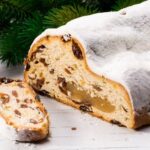Have you ever wondered, “Can I decorate a frozen cake?” This is a common question among home bakers and cake decorators alike. The concept of decorating a frozen cake has its own set of challenges and considerations that make it a topic of interest for many in the baking and confectionary world.
When it comes to freezing cakes, there is a science behind how the process affects the texture and structure of the cake. Understanding this impact is crucial when it comes to decorating a frozen cake, as it can significantly influence the final result. Additionally, choosing the right type of cake for freezing is important to ensure that it maintains its flavor and texture after thawing.
In this article, we will delve into the intricacies of freezing cakes, offering tips for selecting the right cake for freezing, preparing it for storage in the freezer, and successfully decorating a frozen cake. By addressing these aspects, we aim to provide valuable insights that will empower home bakers and aspiring cake decorators to create beautiful and delicious frozen cakes with confidence and skill.
The Science of Freezing Cakes
When it comes to decorating a frozen cake, it’s important to understand the science behind how freezing affects the texture and structure of a cake. Freezing a cake can actually help to lock in moisture and keep the cake fresh for longer periods of time. However, it’s crucial to consider how the frozen state of the cake can impact the decorating process.
The process of freezing a cake involves lowering its temperature, which causes the water content within the cake to form ice crystals. These ice crystals can potentially disrupt the delicate structure of the cake, leading to changes in texture and density. As a result, when decorating a frozen cake, it’s essential to take these changes into consideration.
When choosing to freeze a cake for later decoration, it’s important to select a recipe that can withstand the freezing process without compromising its flavor and texture. Certain types of cakes, such as pound cakes or chiffon cakes, tend to freeze well because of their denser texture and higher fat content. On the other hand, delicate sponge cakes or angel food cakes may not hold up as well when frozen due to their lighter and airier composition.
To further understand how freezing affects different types of cakes and their potential for successful decoration, consider these factors:
- The ingredients used in the cake batter
- The level of moisture in the cake
- The overall structure and density of the finished cake
By taking these factors into account, you can better determine which cakes are suitable for freezing and subsequent decoration.
Choosing the Right Cake for Freezing
When considering whether you can decorate a frozen cake, the first step is to choose the right type of cake that will hold up well to the freezing process. Not all cakes are suitable for freezing, and selecting the appropriate one is essential for achieving the best results. Generally, dense and moist cakes with minimal frosting or fillings freeze well.
This includes pound cakes, carrot cakes, and banana bread. Sponge cakes and chiffon cakes also freeze well due to their light and airy texture.
It’s important to avoid cakes with delicate fillings or decorations that may become soggy or lose their shape during thawing. Additionally, certain types of frosting, such as cream cheese frosting or whipped cream, may not fare well in the freezer. When choosing a cake for freezing, consider its intended use after thawing. For example, if you plan to decorate the cake with intricate designs or piping details, opting for a sturdy cake that can maintain its structure is crucial.
Below Is an Example of a Properly Formatted Table Based on This
| Type of Cake | Freezing Suitability |
|---|---|
| Pound Cake | Freezes well; maintains texture |
| Carrot Cake | Freezes well; maintains flavor |
| Banana Bread | Freezes well; minimal frosting |
Before proceeding with freezing a cake, it’s also crucial to consider any dietary restrictions or allergies that guests may have. For example, if any individual has an aversion to nuts or other ingredients commonly found in certain types of cakes, it’s important to select a recipe that takes these considerations into account.
The success of decorating a frozen cake starts with selecting the right type of cake that can withstand the freezing process without compromising taste or texture. By choosing wisely and considering various factors such as frosting compatibility and structural integrity post-thawing, home bakers and professional decorators alike can ensure a successful outcome when decorating a frozen cake.
Preparing the Cake for Freezing
When it comes to freezing a cake, proper preparation is essential to maintain its quality and freshness. Whether you are a home baker or a professional cake decorator, knowing how to prepare your cake for freezing can make all the difference in ensuring a delicious end result. In this section, we will provide step-by-step instructions for properly wrapping and storing a cake in the freezer to maintain its quality.
Step 1: Cooling the Cake
Before you can freeze your cake, it’s important to let it cool completely after baking. Allowing the cake to cool at room temperature will prevent condensation from forming inside the wrapping, which can lead to soggy spots once frozen. Once cooled, place the cake on a cardboard cake round for added stability during the freezing process.
Step 2: Wrapping the Cake
To prevent freezer burn and maintain the moisture of the cake, it’s crucial to wrap it tightly and securely. Start by gently covering the entire surface of the cake with plastic wrap, ensuring that it is snug against the sides and top. Then, wrap the entire cake in a layer of aluminum foil to provide an extra barrier against freezer odors and moisture.
Step 3: Storing in the Freezer
Once wrapped, place the cake in a sturdy resealable plastic bag or an airtight container. Be sure to label the package with the date of freezing so that you can keep track of its freshness. It’s important to store the cake in an area of your freezer where it won’t be disturbed or crushed by other items. When storing multiple cakes, consider using dividers or shelves to keep them separate and protected.
By following these step-by-step instructions for preparing your cake for freezing, you can ensure that it maintains its quality and freshness until you’re ready to decorate and enjoy it. The proper wrapping and storing techniques are essential when it comes to preserving both flavor and texture, providing you with a solid foundation for creating a beautifully decorated frozen cake.
Decorating a Frozen Cake
When it comes to decorating a frozen cake, many home bakers and cake decorators often wonder if it’s possible to achieve beautiful results without compromising the taste and texture of the cake. The answer is yes, you can decorate a frozen cake, but there are some important factors to consider in order to ensure success.
One of the main challenges when decorating a frozen cake is the potential for condensation to form on the surface as the cake thaws. This can make it difficult for frosting and decorations to adhere properly, and may result in a soggy or mushy texture. Additionally, the texture and structure of the cake can be affected by freezing, which can impact how well it holds up to decorating techniques.
To mitigate these challenges and ensure a beautifully decorated frozen cake, there are several best practices to keep in mind. Here are some tips for handling frosting and decorations when working with a freeze-your-cakes-that-is-the-question/” target=”_blank” rel=”follow noopener”>frozen cake:
- Allow the cake to fully thaw in the refrigerator before attempting any decorating. This will help minimize condensation on the surface.
- Use a crumb coat of frosting before adding any final decorations. This thin layer of frosting will help seal in any moisture from thawing and create a smooth base for additional decorations.
- Consider using firmer or more stable decorations, such as chocolate shards or candy pieces, which can hold up better on a thawed cake compared to delicate fondant or fresh fruit.
By following these best practices, you can successfully decorate a frozen cake while maintaining its flavor and texture. With proper preparation and attention to detail, you can create a stunning dessert that will delight your taste buds and wow your guests.
Thawing and Finishing
When it comes to thawing and finishing a frozen cake, there are important steps to follow to ensure that the final product is both beautiful and delicious. Thawing a cake properly is crucial in preserving its texture and flavor. If not done correctly, the cake can end up soggy or dry, affecting the overall quality of your creation.
The best way to thaw a frozen cake is to transfer it from the freezer to the refrigerator. This allows for a gradual thawing process, which helps maintain the moisture of the cake. Depending on the size of the cake, it can take anywhere from a few hours to overnight for it to fully thaw in the refrigerator.
Once the cake has thawed completely, it’s time to add those final touches. Ensure that the cake is at room temperature before moving forward with any decorations or frosting. It’s important to avoid adding any decorations or frosting while the cake is still cold, as this can cause condensation and make it difficult for them to adhere properly.
Adding final touches such as piping designs, edible flowers, or written messages requires attention to detail and a steady hand. For frosting, make sure it’s at the right consistency for spreading or piping, allowing you to create clean lines and smooth finishes on your cake.
Overall, following these detailed instructions for safely thawing and adding final touches ensures that your frozen cake will be a show-stopper at your special event. With proper care and attention during both thawing and finishing stages, you can achieve professional-looking results that will impress all of your guests.
| Thawing Frozen Cake | Final Touches |
|---|---|
| Transfer from freezer to refrigerator | Ensure room temperature before decorating |
| Allow gradual thawing process | Add details with attention to detail and steady hand |
| Avoid condensation by waiting until completely thawed | Frosting at right consistency necessary for smooth finishes |
Tips and Tricks for Success
Decorating a frozen cake can be a daunting task, but with the right tips and tricks, you can achieve professional-looking results that will impress your guests. Whether you are a home baker or a cake decorating enthusiast, there are several key considerations to keep in mind when embarking on this creative endeavor. In this section, we will explore expert advice and insider tips for achieving stunning results when decorating a frozen cake.
Use a Crumb Coat
One of the most important steps in decorating a frozen cake is applying a crumb coat before adding the final layer of frosting. A crumb coat is a thin layer of frosting that seals in any loose crumbs on the surface of the cake, creating a smooth base for additional decorations.
When working with a frozen cake, it’s especially important to apply a crumb coat to ensure that the frosting adheres properly and provides a clean backdrop for your design.
Work Quickly and Efficiently
When it comes to decorating a frozen cake, time is of the essence. Frozen cakes can quickly develop condensation as they thaw, which can cause colors to run and frosting to become soggy. To avoid these issues, it’s essential to work quickly and efficiently when adding decorations to a frozen cake. Prepare all of your decorating elements in advance and have them readily available so that you can complete the process as efficiently as possible.
Consider Using Different Decorations
When decorating a frozen cake, it’s important to consider using decorations that can withstand freezing and thawing without losing their shape or color. While fresh flowers or delicate sugar decorations may not fare well on a frozen cake, edible pearls, sprinkles, or chocolate shavings are great options for adding visual interest without compromising the overall presentation. By choosing decorations that are freezer-friendly, you can ensure that your finished product maintains its beauty even after thawing.
By following these expert tips and insider tricks for decorating a frozen cake, you can achieve professional-looking results that are sure to impress. With careful planning and attention to detail, you can create a stunning masterpiece that not only looks beautiful but also tastes delicious. So go ahead – unleash your creativity and decorate that frozen cake with confidence.
Conclusion
In conclusion, while decorating a frozen cake may present some challenges, it is entirely possible with the right techniques and tips. Understanding the science behind freezing cakes, choosing the right cake for freezing, and properly preparing and thawing the cake are crucial steps in ensuring a successful decorating process. By following these guidelines and incorporating expert advice and insider tips, home bakers and cake decorators can confidently tackle the task of decorating a frozen cake.
It is important to remember that not all cakes are suitable for freezing, so selecting the right type of cake is key. Additionally, properly wrapping and storing the cake in the freezer will help maintain its flavor and texture once it is thawed for decorating. When it comes to adding the finishing touches, handling frosting and decorations on a frozen cake requires special attention to ensure a professional-looking result.
With this comprehensive guide in hand, readers can now approach the prospect of decorating a frozen cake with confidence and excitement. By understanding the best practices for freezing, thawing, and decorating a cake, they can achieve beautiful and delicious results that will impress guests at any celebration. So go ahead – try your hand at decorating a frozen cake with these expert tips and enjoy creating stunning confections like a pro.
Frequently Asked Questions
Can You Put Frosting on a Frozen Cake?
Putting frosting on a frozen cake is not advisable. The extreme temperature difference can cause the frosting to crack or become runny. It’s best to let the cake thaw before adding frosting.
How Long to Thaw a Cake Before Decorating?
Thawing a cake before decorating usually takes about 1-2 hours at room temperature. However, the exact time may vary depending on the size and thickness of the cake. A good rule of thumb is to touch the cake gently – if it feels pliable and no longer frozen, it’s ready to decorate.
Can I Decorate a Cold Cake?
Decorating a cold cake is possible and even preferable in some cases, especially with certain types of frosting like whipped cream or ganache that hold their shape better when applied to a chilled surface. Just make sure the cake isn’t completely frozen, as this could lead to uneven frosting application and potential texture issues once it thaws.

Welcome to our cake decorating blog! My name is Destiny Flores, and I am the proud owner of a cake decorating business named Cake Karma. Our mission is to provide delicious, beautiful cakes for all occasions. We specialize in creating custom cakes that are tailored specifically to each customer’s individual needs and tastes.





